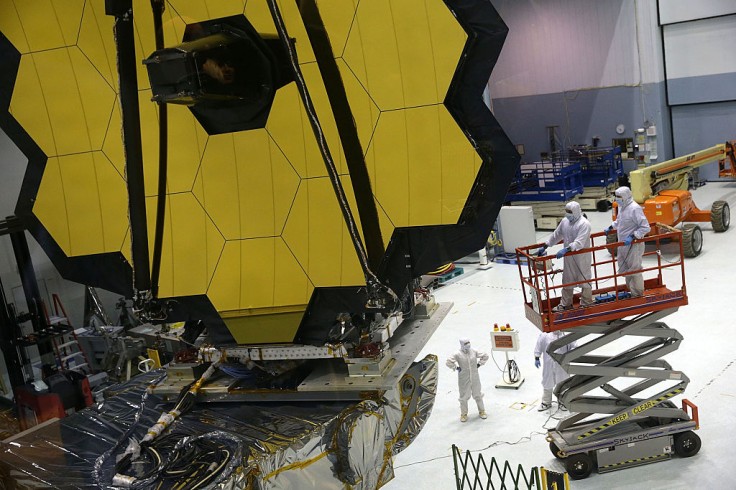
NASA revealed some bad news about the upcoming James Webb Space Telescope launch date, which was pushed from December 18 to 22. This is because of an incident during launch preparations that might have damaged the space observatory.
On Monday, NASA posted an update about James Webb Space Telescope. They said the telescope's launch date will be pushed "no earlier than December 22 to allow additional testing of the observatory, following a recent incident that occurred during Webb's launch preparations."
James Webb Space Telescope Problem: Incident Report
During transportation, Arianespace technicians were preparing to attach the Webb to a launch vehicle adapter. This should have integrated the space observatory on the upper stage of the Ariane 5 rocket. Unfortunately, an unplanned clamp band release caused a vibration throughout the observatory. NASA had to stop its operations and inspect the damage.
Delaying the spaceflight over a "vibration" might seem overblown, but it is important to keep in mind that the James Webb Telescope has to operate perfectly in space. One mistake can cause a massive breakdown, and researchers will have a hard time "fixing" anything already deployed in space.
For reference, the James Webb Space Telescope will unfold like an origami during deployment. The whole process will take 29 days, and there are over 300 single points of failure on the space observatory. Also, keep in mind that the James Webb will operate in deep space atmosphere, with different pressures, temperatures and microgravity patterns. This is why researchers decided to delay deployment.
Read Also : New Hubble Telescope Pictures Gives Grand View of Giant Planets! Close Look at Jupiter, Saturn and MORE
A New James Webb Space Telescope Launch Date Target
NASA's science chief, Thomas Zurbuchen, tweeted another update after the incident. He said, "I am confident the team will do everything they can to prepare Webb to explore our cosmic past... Certainly, this step is worth the wait."
I am confident the team will do everything they can to prepare Webb to explore our cosmic past. @NASAWebb is going to #UnfoldtheUniverse in ways that are unimaginable. Certainly, this step is worth the wait. pic.twitter.com/M00BothNNk
— Thomas Zurbuchen (@Dr_ThomasZ) November 22, 2021
Understandably, many are excited about the James Webb Space Telescope deployment. It is often recognized as the successor to the three-decades-old Hubble Space Telescope. Although researchers emphasized that Webb will not replace Hubble, because they use different technologies, it is undeniable that Webb is the bigger and much more powerful telescope between the two.
According to LiveScience, Hubble can see wavelengths between roughly 380 and 740 nm. It could also cover a bit of ultraviolet and infrared.
In comparison, Webb is an infrared telescope optimized for 600 to 28,000 nm. It will see orange lights, red lights and a wide range of longer wavelengths beyond that. This opens up a lot of potential for research on star-forming regions, exoplanets and distant galaxies!
The sudden delay disappointed a lot of fans, especially since Webb is nearly a decade late from its first launch schedule. However, the decision is also understandable. Hopefully, researchers can now stick to the new date and launch the fantastic telescope before the year ends.
Related Article: NASA DART Mission, Video: How to Watch NASA Crash a Spacecraft Into an Asteroid









